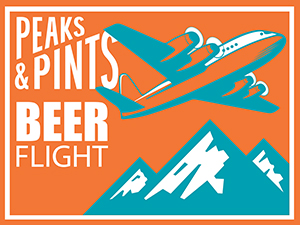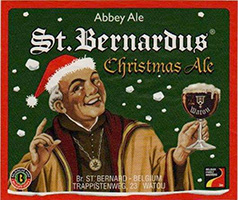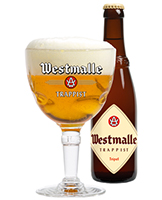 Belgium is a mecca of sorts for beer enthusiasts, and rightfully so. The countryside of this small European nation is dotted with breweries whose traditions go back hundreds of years. They’re producing styles of beers such as wild and funky lambics, seasonal farmhouse saison beers, and strong ales made in monasteries. Unlike wine, beer is less tied to terroir of region. But all that said, the Payottenland surrounding Brussels is very much associated with the lambic style, so that’s where you’ll find brewers and blenders like 3 Fonteinen, Lindemans and De Cam. Or travel further south to Wallonia, to stop in Tilquin. If you’re looking for a classic farmhouse ale, head down to the Hainaut province, Wallonia and the French-speaking south, where you can find breweries such as Blaugies and Dupont. West Flanders near Bruges features Belgian strong ales and old abbey-inspired beers — the brew that the monks make. You’ll find them in the Westvleteren monastery, a small Trappist monastery where the monks still do all of the brewing. Nearby Westvleteren is a brewery called St. Bernardus, which actually brewed the beers for Westvleteren for almost 50 years until the monks decided to brew again in 1992. Antwerp may not be as laden with local micro-breweries and authentic Trappist tasting-rooms as some of the more provincial parts of Flanders, but it does house famed brewery Westmalle. Huyghe Brewery is a brewery founded in 1906 by Leon Huyghe in city of Melle in East Flanders. Its “flagship” beer is Delirium Tremens, a golden ale. Indeed. The name of the Belgian brewery is Huyghe, not Delirium. Anyway, today’s Peaks and Pints beer flight is a tour of Belgium that we call Craft Beer Crosscut 12.19.19: A Flight Around Belgium.
Belgium is a mecca of sorts for beer enthusiasts, and rightfully so. The countryside of this small European nation is dotted with breweries whose traditions go back hundreds of years. They’re producing styles of beers such as wild and funky lambics, seasonal farmhouse saison beers, and strong ales made in monasteries. Unlike wine, beer is less tied to terroir of region. But all that said, the Payottenland surrounding Brussels is very much associated with the lambic style, so that’s where you’ll find brewers and blenders like 3 Fonteinen, Lindemans and De Cam. Or travel further south to Wallonia, to stop in Tilquin. If you’re looking for a classic farmhouse ale, head down to the Hainaut province, Wallonia and the French-speaking south, where you can find breweries such as Blaugies and Dupont. West Flanders near Bruges features Belgian strong ales and old abbey-inspired beers — the brew that the monks make. You’ll find them in the Westvleteren monastery, a small Trappist monastery where the monks still do all of the brewing. Nearby Westvleteren is a brewery called St. Bernardus, which actually brewed the beers for Westvleteren for almost 50 years until the monks decided to brew again in 1992. Antwerp may not be as laden with local micro-breweries and authentic Trappist tasting-rooms as some of the more provincial parts of Flanders, but it does house famed brewery Westmalle. Huyghe Brewery is a brewery founded in 1906 by Leon Huyghe in city of Melle in East Flanders. Its “flagship” beer is Delirium Tremens, a golden ale. Indeed. The name of the Belgian brewery is Huyghe, not Delirium. Anyway, today’s Peaks and Pints beer flight is a tour of Belgium that we call Craft Beer Crosscut 12.19.19: A Flight Around Belgium.
Craft Beer Crosscut 12.19.19: A Flight Around Belgium
 Lindemans Kriek
Lindemans Kriek
3.5% ABV
PAYOTTENLAND: Lambics are sharp, acidic, and fruity. They can be compared to yogurt or vinegar but with hints of sweetness. There are also several sub-styles of lambics. Lindemans has been brewing lambic since 1811. They were the first to introduce lambics to the American market (in 1979) and have remained the most popular brand. While they also make a peach, raspberry and pear lambic, the cherry is their most traditional flavor. Whole fresh cherries are added to the casks, triggering a third fermentation and promoting a spritz-y carbonation that gives the finished beer a champagne-like character with excellent mouthfeel. The flavor is akin to a natural black cherry soda, having a dark sweetness with only a flash of malty bitterness.
 Delirium Tremens
Delirium Tremens
8.5% ABV, 26 IBU
MELLE, EAST FLANDERS: Delirium Tremens debuted Dec. 26, 1988, more than 80 years after Huyghe Brewery’s founding. Although it wasn’t Huyghe Brewery’s first beer, Delirium Tremens remains its flagship. According to legend, a tax collector felt himself gradually slipping into a state of unexpected drunkenness when he came up with the name, “Delirium.” Whether he saw pink elephants remains unknown. Delirium Tremens is one of the most popular Belgian beers, and for good reason. Its signature pink elephant logo and ceramic bottles have helped it become incredibly recognizable. The medium-bodied Belgian golden ale exhibits apple and pear aromas at the nose, and features banana, fruit, spice, and wheat flavors.
 St. Bernardus Christmas Ale
St. Bernardus Christmas Ale
10% ABV, 28 IBU
WEST FLANDERS: Brouwerij St Bernardus is famous for both their beers and their heritage. The brewery used to brew the famous Westvleteren beers before the monastery returned all production back to within the abbey’s walls. Their Abt 12 quad represents what Westvleteren 12 used to be before the abbey changed their yeast strain. St. Bernardus’ Christmas Ale is brewery’s Abt 12 offering, but gussied up with rich malt, dark dried fruit, fig, hints of anise, nutmeg, cinnamon, brown sugar … basically a fruitcake.
 Brasserie Dupont Saison Dupont
Brasserie Dupont Saison Dupont
6.5% ABV, 30 IBU
WESTERN HAINAUT: Saison may sound French in name, but the style actually originated in Wallonia, the French-speaking part of Belgium. Traditionally, saisons were brewed at the end of the winter season to last through the warmer months before refrigeration was common. Thus, the beer had to be sturdy enough to last for months but light enough that it could remain thirst-quenching and refreshing in the summer. They’re now brewed year-round in tiny, artisanal breweries whose buildings reflect their origins as farmhouses — hence the saison’s alias, farmhouse ale. Saisons are complex brews; most are fruity in aroma and flavor, contain lots of spice and earthy yeast tones, and are moderately tart. They also tend to be semi-dry with many only having touch of sweetness. If saisons were developed to be consumed by hard-working farmers, Peaks and Pints thinks we may need to become a hard-working farmer. Brasserie Dupont’s Saison Dupont seems, at first glance, to be a simple saison. The complexities however, are nearly endless. There is an inherent sweetness that is counter-balanced by an earthy taste. Refreshing and subtly complex, Saison Dupont also refuses to disappoint with 6.5-percent alcohol.
 Brouwerij der Trappisten van Westmalle Tripel
Brouwerij der Trappisten van Westmalle Tripel
9.5% ABV, 36 IBU
ANTWERP KEMPEN REGION: In 1836 the Belgian Westmalle monastery became a Trappist Abbey and began brewing beer shortly thereafter. The holy suds they produced started out as an insider-only deal — a choice beverage to be made and enjoyed by Trappists and Trappists alone, but eventually they decided to expand and opened up a public beer hall in the early 1930s. Westmalle embodies the tripel style with a thoughtful balance of sweet, fresh pear, lemon zest and a dash of peppery spice. Its flirtatious effervescence sweeps the mouth clean, while lingering lemony hops leave the mouth pining for more. It’s an exceptional beer, with a great deal of finesse and elegance and a splendid enduring aftertaste.
